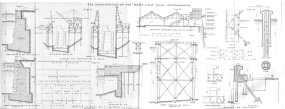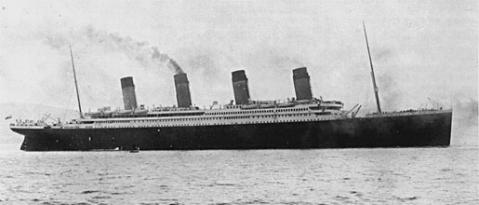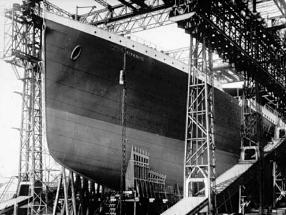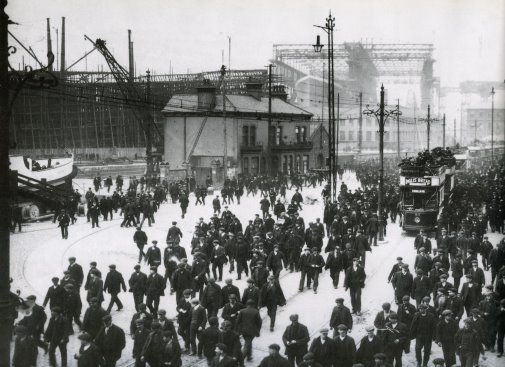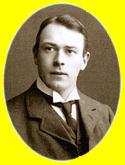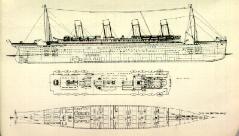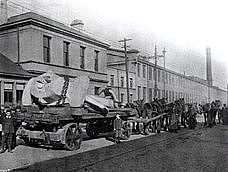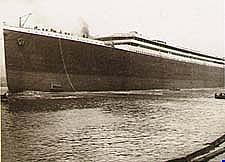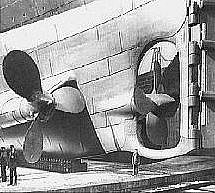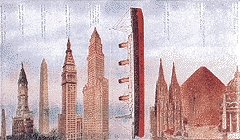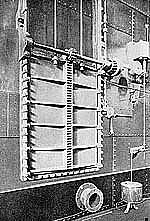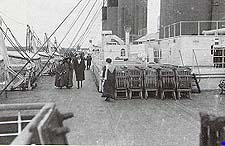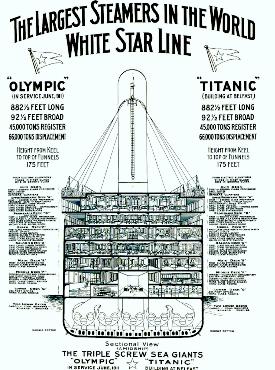
NEXT - LIFE ON BOARD THE TITANIC
"I cannot imagine any condition which would caused a modern ship to founder ...... Shipbuilding has gone beyond that…."
|
Introduction |
On Thursday 20th September 1906 the White Star Line launched the RMS Adriatic (See above picture). She was the last of the four huge liners that the company commissioned. The builders, Harland & Wolff of Belfast, had a long-standing connection with the White Star Line. The Celtic was the first of the ships to be launched in April 1901. It was followed by the slightly larger Cedric in August 1902. All four ships were over 20,000 tonnes. They were built in accordance with the White Star Line's policy of providing comfort and reliability to the passengers who travelled on them. However, speed was an important factor for any sea going vessel. A high proportion of the space onboard ships was taken by large quantities of coal needed to power the ship. Thomas Ismay realised that people would make longer journeys if the vessel they were sailing on was spacious and well appointed with all the comforts of home they left behind. It was anticipated that the new ships would be very popular and in June 1905 the Baltic, a new 23, 884 ton vessel was launched. The Baltic entered service with the claim of the title "the largest ship in the world". The scale of this liner had never been seen before. Her appointments were the finest. They included the first ever swimming pool and Turkish Baths (saunas). Unfortunately, at 16.5 knots, speed was somewhat slower than preferred. Competition was already beginning with the rival company Cunard Line. They launched two ships, the Mauretania and the Lusitania.
The Mauretania (above) was launched at the Tyneside shipyard of Swan Hunters and entered service in September 1907. The Lusitania was launched at the John Brown shipyard on the Clyde and entered service in June 1907. Each weighed over 30,000 tonnes. A new generation of ships had been born which out classed the four large White Star line vessels. On her second crossing of the Atlantic, the Lusitania took the Atlantic Speed Record for Britain averaging a speed of 23.99 knots, nearly seven knots quicker than the Adriatic. To make matters worse for the White Star Line, the Mauretania also proved to be faster. The Cunard Lines had out stripped the White Star Line of owning the fastest and largest ships in the world. It was obvious to the White Star Line that their competitors were winning the struggle to maintain dominance over the Atlantic crossings. They had to react to the situation quickly. The story of the RMS Titanic and sisters begins……………… How it all began The story of the Royal Mail Ship (RMS) Titanic begins over a dinner early in 1907. The Chairman of the White Star Line, J. Bruce Ismay accompanied by his wife went to dine at Downshire House, Belgrave Square in London. They met Lord Pirrie, the Chairman of Harland and Wolff Shipbuilders and his wife. The topic of conversation of dinner were the two remarkable new liners Lusitania and Mauritania, both from the rival company Cunard lines. Ismay raised the concept of bigger and more luxurious ships, in order to surpass the existing competition. Ismay was the son of Thomas Ismay, the founder of the White Star Line. J. Bruce Isamy became President of the International Mercantile Marine Company (IMM). His long-term goal for the company was to attain the "Blue Riband" which to do so would require expensive and often uncomfortable vessels to achieve the high speed needed. Lord Pirrie had become Chairman of Harland and Wolff in 1896. Due to the nature of the industry, Harland and Wolff and the White Star Line had a close association.
After dinner, Ismay and Bruce discussed the construction of three sister ships: the Titanic, Olympic and Gigantic. It was only after the tragic loss of the Titanic that the name Gigantic was changed to Britannic. The Olympic and the Titanic would be nearly one and a half time larger than Mauretania and the Lusitania. As a result, these three ships would make the White Star Line again prominent. Rough drawings were made of the three ships which envisaged three funnelled ships each with two or three masts. The final plans added a forth "dummy funnel" for ventilation but the ships would only have two masts. The chosen names ascribed the three ships as being mighty, powerful: the biggest the world had ever seen.
Whilst safety, Luxury and comfort were the essential features throughout the plans, all three would have to be capable of significant speed. It was Bruce Ismay's job to secure finances. Early in 1908 the White Star Line issued £2,500,000 of additional shares to cover the bulk of the projected £3 million costs. Together with the profits for the year 1909 exceeding £1 million it was only a matter of time before the project could start. By the end of July 1908, the directors of the White Star Line travelled to examine the final designs of the two ships. The 31st July was a monumental day for the White Star Line because an agreement was signed to commence construction. Whilst Ismay and Pirrie had conceived the idea of the three giants, the general responsibility of the design was delegated to Alexander Montgomery Carlisle, General Manager at Harland & Wolff and Lord Pirrie's brother-in-law. Lord Pirrie approached the shipbuilders of John Brown for the supply of steel and to secure the use of new turbine technologies far more advanced than hitherto. Ships like the Mauretania were already taking advantage of the new technologies and had achieved incredible speeds. The Olympic and Titanic would have to be faster to attain the "Blue Riband." A deal was struck. Pirrie could now compare the different types of engines with new ships especially the new twin screw liners Laurentic and Megentic. Each ship could travel up to 16 knots. Triple screw engines were needed to propel a 46,000 ton ship. The engines of the Olympic Class liners stood four decks high housed in six compartments. In all there were 29 boilers supplied by 159 furnaces generating pressures up to 215 lbs per square inch.
The shipbuilders were faced with another problem. Since 1853 Harland and Wolff had employed 14,000 workers to build a staggering nine ships at any one time BUT the even keels of the layer ships were small compared to the giants they were about to build. No slipways in the world could yet accommodate the Titanic and her sisters. Construction began on a giant slipway named the "Great Gantry."  It cost £100,000. Its crane was specially imported from the German Benrather Company to handle the large loads necessary to fit out the ships following their launch. The crane cost £30,000. The ships would be 882.75 feet in length, 92.5 feet wide and each have a gross tonnage of 45,000. They would be the biggest ships afloat. As construction of the Titanic and Olympic continued it was evident that the ships with an overall length of 882 feet, were too big for the River Test in Southampton. As a result, the "White Star Dock" was designed specially to berth the new ships. Its construction was completed before the launch of the Olympic. It covered 16 acres and was 40 foot deep at low tide, meaning that the ships could be berthed at either low or high tide.
|
Construction Begins
|
On the 1st July 1907, the order was given to commence work on two of the sisters. The Olympic was given shipyard number 400 and the Titanic 401 .
The Great Gantry spanned 840 feet. 10 cranes transported men and material to the different levels of construction. Over 11,000 employees were taken on to carry out the work.
Harland & Wolff Shipyard -Workers finishing work. RMS Titanic in the background
The keel of the Olympic was laid on the 16th December 1908. She was framed by the 20th November 1908. The shell plating was completed by April 1910 and she was launched on the 20th October 1910. She was completed by the end of May 1911.
Construction of the Titanic started after the Olympic in order to reduce the precurement pressures of such building programme. She was laid on the 31st March 1909. She was framed by the 6th April 1910, her steel shell plating completed by the 19th October 1910 and was ready for launching on the 31st May 1911. For the grand launching, the honourarium consisted of J. Pierpont Morgan, the Head of the IMM, J. Bruce Ismay and the Lord Lieutenant of Ireland.
It took only 62 seconds for her to glide into the water. It required 22 tons of tallow and soap to be able to stand the huge tonnage of the ship. Once launched she would be ready to be fitted out for her maiden voyage.
After the launch, there was a VIP lunch for the guests. After which, Lord Pirrie took them to the Olympic which was moored nearby. Soon the Olympic would depart for Liverpool and then to Southampton for her maiden voyage to America. The Titanic's fittings were delayed because the Olympic needed repairs and the owners wanted her back in service as soon as possible. However, work was soon underway. A 200-ton floating crane was used to fit the Titanic.
SpecificationsThe Titanic, Olympic and Gigantic were the beginning of an era. Their huge scale was unsurpassed.
The ships were composed of ten decks including the Orlop Deck. The decks were lettered A-G. Below deck G were the boiler rooms. The hull was divided into 16 watertight compartments by means of 15 watertight bulkheads extending through F deck.
The watertight doors provided thoroughfares between compartments. They could be closed three ways in case of an emergency. The first way was by a switch the Captain had on the bridge that tripped all doors at the same time. Alternatively each door could be individually closed via a lever or thirdly, by a float mechanism located beneath the floor so that if a compartment was flooded, incoming water triggered the mechanism and the doors would shut. The whole design of the ship meant that it could stay afloat with any two compartments flooded! On a worst case scenario, the Titanic or any of her sisters could suffer a broadside collision and yet able to limp back to base for repairs. The "Shipbuilder," a prestigious British shipping trade journal labelled the Titanic as being "unsinkable." The two ships could attain speeds up to 21 knots under optimum conditions. Steam was generated from 29 boilers enabling their engines to develope 15,000 horsepower. in total. To make it easier to work in the boiler rooms, the double bottom was not continued up the sides of the hull. This which would prove to be disastrous later. The crew consisted of 860 people: 320 working the ship, 475 stewards and 65 navigators. Most of the crew was accommodated in the lower deck. The captain and his officers were housed in the forward boat deck. The lifeboat situationThe designers of the Titanic slightly improved upon the regulations of the Board of Trade regarding maritime safety. Whilst these rules specified that a vessel over 10,000 tons needed 16 lifeboats.
The Titanic actually carried twenty: Sixteen wooden, and four collapsible. Two of the collapsible boats were kept on the roof of the officers quarters with little intention to use them except as a last resort. Sixteen lifeboats were insufficient for the crew and passengers on board. In fact, the managing director of Harland and Wolff wanted 64 lifeboats but it was belived that so many boats would look unsightly and no one would travel on a ship crowded with boats. Other rumours circulated that the first class passengers did not favour lifeboats on their decks because they preferred the open space and liked to walk around the decks - not staring at boats although they would have been there for their safety. So why did the designers not ensure that there were enough lifeboats on the Titanic to ensure a place on the boats for each passenger and crew member? Some authors have suggested that the designers of such ships had no or little experience to compare after all, a disaster like the Titanic had never happened before. The size of such ships had grown 400% in 12 years and the shipping experts had no way of foreseeing what circumstances could give rise to a sinking. The writer on the other hand does not support this line of argument. Experts must have seen a short-fall in boats in relation to passengers in crew. After all, they were the Board of Trade. However, hindsight is a wonderful thing. The Titanic enquiry will be dealt with later. Eight months had passed since the launch and her fitting had been completed. The Titanic was ready for her trials. The officers had been notified to board her to familise themsleves with her facilities. The trials commenced on the 2nd April 1912. Andrews was on board making notes of minor adjustments and overseeing the trials. The Titanic was towed down the Belfast Lough by the tugs Hercules, Herculaneum, Huskisson, Hornby and Herald.
She easily raced up to 21 knots and plunged to an emergency stop.
The captain, Edward Smith had previously steered the Olympic but had left that ship in Southampton. He was often described as a "splendid seaman" who loved his dog as well as a cigar. He had an engaging manner and pleasing personality and had the reputation of being an ideal captain. Familiar with the helm he once said with confidence: "I cannot imagine any condition which would caused a modern ship to founder ...... Shipbuilding has gone beyond that…." The Titanic sailed from Belfast to Southampton. Crowds awaited it arrival. She was greeted by five tugs and taken into the River Test. The local paper welcomed the arrival pointing out with pride that only twelve hours before her sister Olympic had graced the dock. Andrews was busy the next day preparing for sea. He was not the only architect on board because representatives of the Board of Trade wanted to carry out final tests before the maiden voyage. Even instruments like rockets were tested. Second Officer Lightoller lowered the lifeboats as part of the test. Finally, the Titanic was ready for her maiden voyage. |
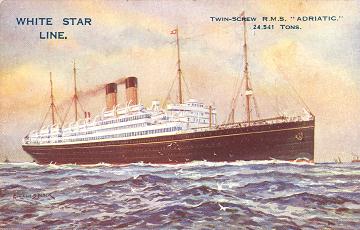
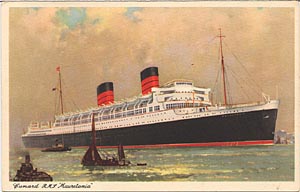
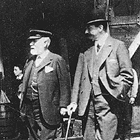
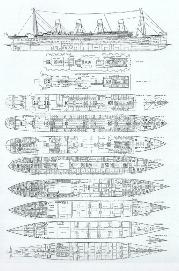
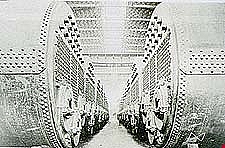 The Titanic's boilers
The Titanic's boilers